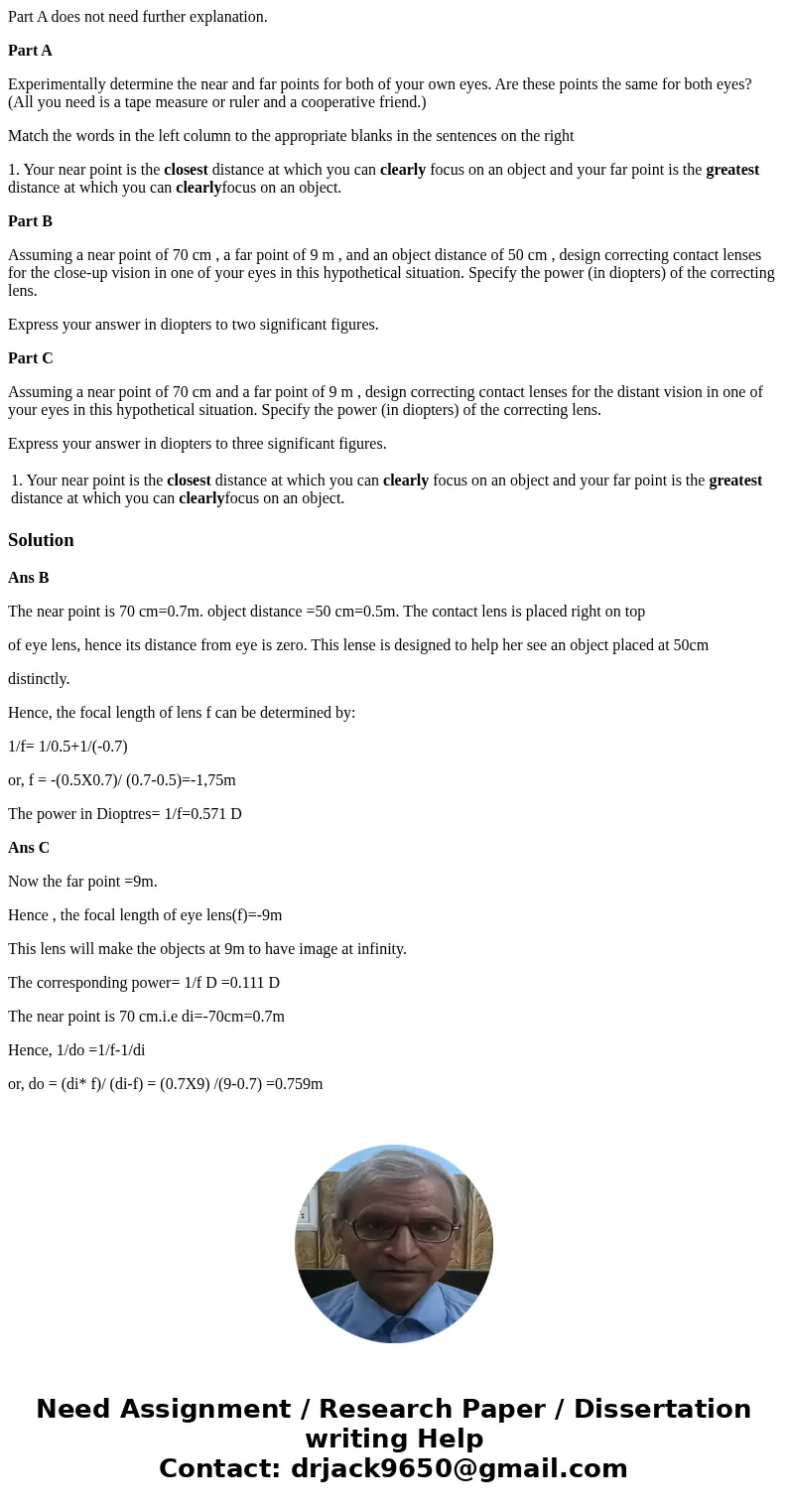Part A does not need further explanation Part A Experimental
Part A does not need further explanation.
Part A
Experimentally determine the near and far points for both of your own eyes. Are these points the same for both eyes? (All you need is a tape measure or ruler and a cooperative friend.)
Match the words in the left column to the appropriate blanks in the sentences on the right
1. Your near point is the closest distance at which you can clearly focus on an object and your far point is the greatest distance at which you can clearlyfocus on an object.
Part B
Assuming a near point of 70 cm , a far point of 9 m , and an object distance of 50 cm , design correcting contact lenses for the close-up vision in one of your eyes in this hypothetical situation. Specify the power (in diopters) of the correcting lens.
Express your answer in diopters to two significant figures.
Part C
Assuming a near point of 70 cm and a far point of 9 m , design correcting contact lenses for the distant vision in one of your eyes in this hypothetical situation. Specify the power (in diopters) of the correcting lens.
Express your answer in diopters to three significant figures.
| 1. Your near point is the closest distance at which you can clearly focus on an object and your far point is the greatest distance at which you can clearlyfocus on an object. |
Solution
Ans B
The near point is 70 cm=0.7m. object distance =50 cm=0.5m. The contact lens is placed right on top
of eye lens, hence its distance from eye is zero. This lense is designed to help her see an object placed at 50cm
distinctly.
Hence, the focal length of lens f can be determined by:
1/f= 1/0.5+1/(-0.7)
or, f = -(0.5X0.7)/ (0.7-0.5)=-1,75m
The power in Dioptres= 1/f=0.571 D
Ans C
Now the far point =9m.
Hence , the focal length of eye lens(f)=-9m
This lens will make the objects at 9m to have image at infinity.
The corresponding power= 1/f D =0.111 D
The near point is 70 cm.i.e di=-70cm=0.7m
Hence, 1/do =1/f-1/di
or, do = (di* f)/ (di-f) = (0.7X9) /(9-0.7) =0.759m

 Homework Sourse
Homework Sourse